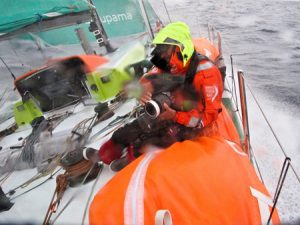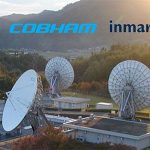More than 100 broadcasters globally have been showing regular coverage of the 12th Volvo Ocean Race, giving viewers an up-close experience of the event. Vibhuti Arora joins the crew at the Abu Dhabi stopover to find out what it takes to capture the action of the race on TV Abu Dhabi was at the heart […]

More than 100 broadcasters globally have been showing regular coverage of the 12th Volvo Ocean Race, giving viewers an up-close experience of the event. Vibhuti Arora joins the crew at the Abu Dhabi stopover to find out what it takes to capture the action of the race on TV
Abu Dhabi was at the heart of sailing action in early January as six boats from the Volvo Ocean Race docked at the UAE capitals shores. Setting sail from Alicante in Spain, the teams had their second stopover at Abu Dhabi after Cape Town in South Africa, in the worlds longest professional sporting event.
Over nine months, the competing Volvo Ocean 65 boats will sail 38,739 nautical miles before finishing in Gothenburg, Sweden this June. Viewers all around the world can closely follow this journey, watching special features from the race on TV and online. In the Middle East, OSN, Abu Dhabi Sports, Nautical Channel and Fox Sports Middle East broadcast the event. In addition to broadcasting on TV channels, the event is streamed online on Volvo Ocean Races YouTube channel as well as through the Volvo Ocean Race app on Octoshape.
Volvo Ocean Races Technology Director Jordi Neves sheds light on how the event is broadcast, with a combination of onshore and offshore feeds from cameras installed on the boats and other locations on land. For TV, Neves and a team of reporters provide broadcasters with packaged videos, edited and complete with graphic interlays, ready to go on-air. The production is carried out in partnership with UK-based production house Sunset+Vine. Graphics, supplied by 3D specialist Virtual Eye, provide detailed views of the route and the harbours.
Each of the Volvo Ocean 65 boats is a mini-studio with a media desk that integrates a range of hardware and combines them with a set of software applications, all custom-made by UK-based Livewire Digital Ltd., says Neves.
The cameras on the boats are designed and manufactured by Livewire using the Sony FCB-H11 OEM block and are strategically placed in different positions to cover various aspects of the race.
Speaking about the camera positions on the boats, Tristan Wood, Managing Director of Livewire Digital Ltd., says: There are four different camera positions on each boat. An electronically stabilised stern camera that uses the information from the onboard sensors to keep the horizon level; a PoV camera fitted to the mast to provide a shot of the foredeck; a pan, tilt, zoom and level (PTZL) camera fitted between the two hatches known as the coaming camera; and two pan, tilt & zoom (PTZ) cameras are fitted to the underside of the spreaders.
All the cameras are 1080i day/night capable and are supported by three Infrared flood lights for night time operation. The PTZ and PTZL cameras boast 0.7 wide angle lenses.
Each boat has a non-sailing reporter who handles the production while the boats are at sea. The onboard reporter (OBR) documents life on the boat, producing daily videos using waterproof handheld cameras, miniature cameras and radio-mics. The media desk on each boat is used to control the cameras and manage connectivity to shore. The OBR can also control the deck cameras. The system also supports two HDSDI uplink points for use with handheld cameras. The OBRs laptop or iPad mini manage these functions with their built-in workflows.
These reports are then sent in H.264 format via satellite, using the Inmarsat mobile satellite communications network, to the watch producer based in the Volvo Ocean Race headquarters in Alicante.
The watch producer provides round-the-clock contact with the OBRs and connects broadcasters to boats for radio and TV interviews by linking the yachts live to satellite.
Three HDMI uplink points at various points on each boat provide the connection of the cameras with the Volvo Ocean Race headquarters in Alicante to send live interviews over satellite, explains Neves.
A critical part of the camera set-up is the crash recorder, which is based on delay line linked to the Stern camera, which is continuously recording video. This function is built into the media desk. In the event of a crash, the media desk uses delay line technology to record HD material with a history of up to three hours.
In case of a dramatic event, the crew can press the crash button and the system will archive the material so that there is pre-event and post event video.
As the boats approach pit stops, the OBR establishes a connection with the temporary media desk/studio at the race village through Cobhams RF links. The reporter selects the in-port racing workflow, which pre-configures the media desk A/V routing and then uses the Microwave Management app to select one of a set of profiles that configure the microwave to operate optimally under different prevailing conditions.
The Onshore Network
Each Volvo Ocean 65 racing boat, plus two chase craft and helicopters, is equipped with Cobhams Solo H.264 transmitters to provide live HD video to the onshore race village at each stopover.
Neil Tomlinson, Regional Sales Director MEA, Cobham TCS, who oversaw the Abu Dhabi Race Village connectivity, says the race village is networked using Cobhams TCS IP Mesh technology, employing COFDM modulation and narrowband video compression technology to transmit video over the mesh network.
A combination of Cobham receive systems and IP Mesh networks receive transmissions from the onboard systems and remote cameras deployed around the race village, sending them to a production centre to be edited and distributed across all platforms to the public. Visitors in each race village receive live, close-up views of the action as it happens offshore. The IP Mesh systems are also used throughout the site for private IP (Ethernet) connectivity.
Up to 16 nodes can be combined into an IP Mesh network. The COFDM IP Mesh constantly readjusts itself, which means its nodes can be moved if necessary, to extend range of coverage. Also, if the signal is lost on one node, the others automatically readjust to re-establish the connection without loss of signal. At the receiving end, Cobhams PRORX receive systems ensure that the video is recovered free from fading and multipath interference.
ADM’s role in the Volvo Ocean Race
The participating Volvo Ocean 65 boats docked for around two weeks at Abu Dhabi in December-January. The race village set up at the Abu Dhabi Corniche Breakwater hosted in-port races and several sailing events in a festival of sorts that attracted sailing enthusiasts from across the UAE. For the Abu Dhabi leg, local broadcaster Abu Dhabi Media (ADM) established a broadcast studio at the race village to carry the various in-port events. ADMs production arm, LIVE HD, deployed an Alyah truck to capture the studio commentaries and interviews, with live feeds from the Volvo Ocean Race production team for broadcasting on Abu Dhabi Sports.
A six-camera set-up was used for studio production, explains Hamad Abdelrazaq, Head of Technology at LIVE HD.
Comprising five Grass Valley LDK cameras, the truck boasts a reporter camera, also an LDK along with a Jimmy Jib. A production team of 25 along with commentators from ADM were an integral part of the broadcast team. The video feeds of all the offshore action were sent to the OB van by the Volvo Ocean Race production crew via Cobham RF links, and the interviews with sailors and commentaries were produced using the six-camera set-up.
At the start of the race, live production using live RF links of interviews with the sailors was broadcast live on a host of TV networks. The signals from the different cameras were sent via RF links to the race village. In addition to the five cameras on each of the boats and the handheld cameras, feeds also came from Sony Cineflex helicopter cameras at the port of call. The two chase boats, equipped with Sony ENG XDCAMs, were deployed to provide live feeds to the race village studio, as were two wireless cameras.














































































